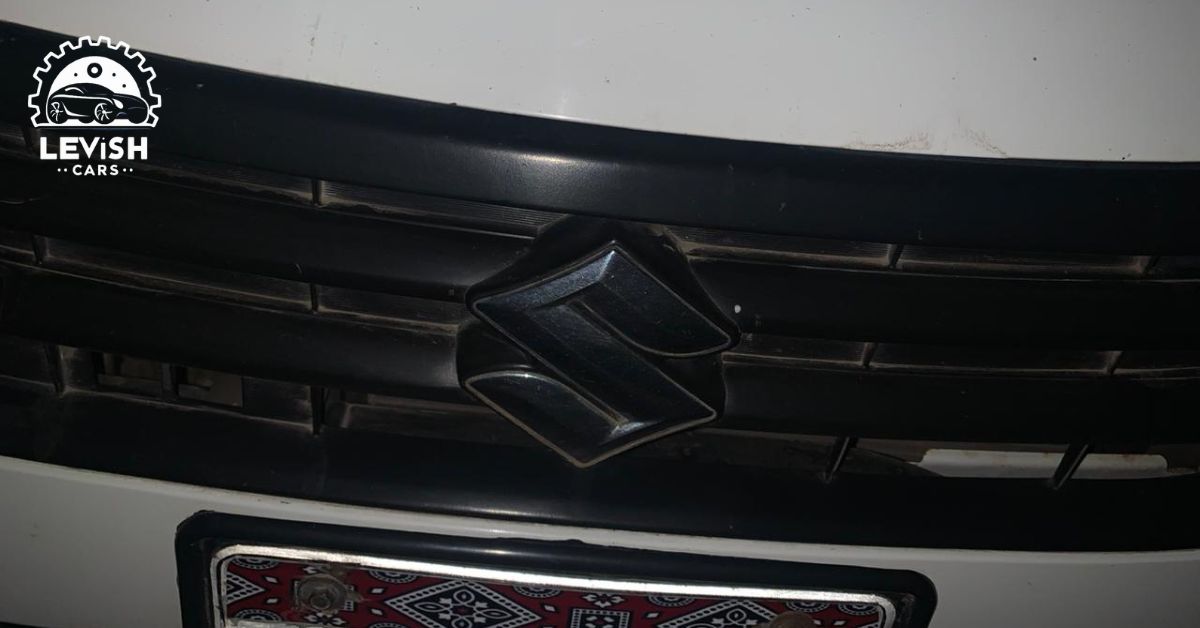Cars need good airflow. Engine heat and fumes build up inside. Cowl vents help remove hot air. They let in fresh outside air. Cowl vents are special ducts. They are located at the base of the windshield. The vents go through the firewall. The firewall separates the engine from inside the car. Cowl vents provide ventilation.
They improve air circulation. This cools down the engine compartment. It makes the inside of the car more comfortable. Cowl vents are an important feature. All cars need to control heat and fumes.
What Are Cowl Vents?
Cowl vents are openings at the base of the windshield. They allow air to flow in and out of the engine compartment. Cowl vents go through the firewall. The firewall separates the engine from the interior of the car.
Cowl vents serve as ventilation ducts. They let fresh air enter the engine bay. They also let hot engine air and fumes escape. This airflow reduces heat buildup. It stops fumes from getting inside the car. Cowl vents improve circulation.
They cool the engine and prevent overheating issues. They make the car interior more comfortable. All vehicles need proper ventilation. Cowl vents provide an efficient way to exchange air. They are an important feature for engine cooling.
How Cowl Vents Work?
Here’s a brief overview of how cowl vents work on cars:
- Cowl vents are openings in the cowl (the metal panel between the windshield and the hood) that allow fresh air to enter the passenger compartment. They are a type of ventilation system.
- As the car moves forward, high pressure air builds up on the front of the vehicle. This high pressure area exists because the air has nowhere to go as it hits the front of the car.
- The high pressure area creates a force that pushes the air through any openings it can find – like the cowl vents. So the high pressure essentially forces fresh outside air into the vents and into the passenger compartment.
- The moving vehicle creates a vacuum effect behind the high pressure area. This vacuum sucks the stale air out of the passenger compartment through other vents usually placed at the rear of the vehicle.
- This constant supply of fresh air entering the cowl vents and stale air exiting other vents creates steady airflow through the interior to keep the air fresh.
- Cowl vents usually have controls inside the car to regulate the amount of airflow. Close the vents in winter or rain to limit cold drafts and moisture. Open them fully in summer for maximum ventilation.
- So in summary, the forward motion of the car creates high and low pressure zones that generate airflow through strategically placed vents like the cowl vents. This constant airflow ventilates the interior.
Why Is It Important?
There are a few key reasons why cowl vents are an important part of a car’s ventilation system:
- Provides Fresh Air: Cowl vents bring in fresh, outside air which helps keep the interior cabin from getting stale. Stale air can cause drowsiness and fatigue.
- Controls Humidity: The constant airflow from opening and closing cowl vents regulates interior humidity and prevents windows from fogging up. Too much humidity makes the air feel stuffy.
- Prevents Overheating: On hot days, open cowl vents bring in cooler outside air and expel hot interior air, preventing overheating. This provides comfort and prevents damage to interior parts.
- Removes Fumes: Cowl vents dilute and remove fumes from the cabin like exhaust or fuel vapors. This keeps the air clean of potential irritants or toxic gases.
- Controls Climate Naturally: Cowl vents provide ventilation without relying solely on air conditioning, which requires additional engine power. The natural airflow is energy efficient.
Installing Cowl Vents: What You Should Know

Here are some useful tips on installing aftermarket cowl vents:
- Check vehicle compatibility: Not all vehicles have space on the cowl to install vents. Research specific fitment for your make and model.
- Consider ventilation needs: Assess if you really need additional cowl vents based on your climate and existing ventilation. More vents may not be better.
- Buy quality vents: Opt for vents made of durable materials like heavy-duty plastic or stainless steel to prevent cracking or corrosion.
- Ensure proper seals: The vents should seal tightly to the cowl to prevent water leaks into the interior. Proper installation is key.
- Install gaskets/seals: Use provided or additional foam gaskets and weatherstripping seals for an airtight seal. This also reduces vibration noise.
- Avoid obstruction: Don’t locate cowl vents where windshield wipers, hood latches, or other components can obstruct ventilation.
- Check alignment: Align vents evenly on each side of the cowl for proper aerodynamics and aesthetic look.
- Connect ductwork: Connect the vents to existing heating/AC ducts to channel airflow properly into the cabin.
- Protect from elements: Use built-in baffles, mesh screens, or aftermarket grilles to prevent rain, leaves and other debris from entering ducts.
- Follow all instructions: Carefully follow the manufacturer’s install procedures to avoid problems. Don’t improvise.
Properly installing aftermarket cowl vents takes planning and care. But done right, they can greatly complement your vehicle’s ventilation system.
Types of Cowl Vents
There are a few main types of cowl vents used in automotive design:
- Louvered Vents: These have angled slats or louvers that allow airflow but block direct water/debris. They can be opened or closed via interior controls.
- Scoop Vents: These protruding vents sit above the hood line and scoop in air. They are permanently open and have a sporty look.
- Discrete Vents: Smaller vents designed to be subtle and blend into the cowl line. They allow moderate airflow when open.
- Ram Air Vents: Large functional vents that sit very high on the cowl to catch maximum high pressure airflow at speed. Popular on performance cars.
- Active Vents: Vents that utilize electric motors and actuators to actively open/close or reposition themselves as needed to optimize airflow.
- Ducted Vents: Vents connected to ductwork to channel air to specific locations, like floor vents or defrost vents.
- Non-Cowl Vents: Ventilation integrated into headlights, taillights, and other body panels rather than the cowl.
The type of vent depends on factors like a vehicle’s use case, aerodynamic needs, styling preferences, and intended airflow paths. Performance cars tend to use more aggressive ram air vents while family sedans often opt for subtle discrete vents.
Maintenance and Cleaning

Here are some tips for properly maintaining and cleaning cowl vents:
- Check often for debris: Leaves, pine needles, and other debris can accumulate in or on the vents. Remove promptly to allow proper airflow.
- Vacuum vents: Use a soft brush attachment to vacuum cowl vent openings and surrounding areas to remove dust and dirt.
- Clean mesh screens: Remove any mesh or perforated screens covering the vents and clean with mild soap and water. Rinse and dry completely before reinstalling.
- Check ductwork: Make sure ventilation ductwork under the cowl is clear of obstructions like leaves or insulation material.
- Remove stuck leaves/debris: Use a small stiff brush or pick to gently loosen any stuck debris inside the vent openings. Avoid scratching.
- Clear drain holes: Many cowl vents have small drain holes at the bottom to let condensed moisture escape. Ensure they are clear.
- Check gaskets/seals: Examine cowl vent seals and gaskets for any signs of deterioration or gaps. Replace if needed.
- Test operation: Operate any adjustable vents or dampers from inside the car to verify they open/close properly and allow good airflow.
- Avoid harsh cleaners: Clean vents only with mild soap and water. Avoid abrasive brushes or chemical cleaners that could damage finishes.
- Wax surrounding paint: Applying wax to the cowl paint around the vents helps protect the finish from the elements.
Regular cleaning and maintenance will help cowl vents function as designed and last for years without any major issues.
Frequently Asked Questions
How does a cowl hood work?
A cowl hood is an automobile hood that has raised sections along the center. This allows cooler outside air to enter through the gap between the hood and windshield to help cool the engine. The raised section creates high and low pressure zones that generate airflow. Some cowl hoods also aid in exhaust removal.
What is cowl head ventilator in ship?
A cowl head ventilator, or cowl ventilator, is a type of ventilation system used on ships and boats. It is a duct or opening in the bow section that allows air to flow into the interior living spaces of the vessel while keeping out water. The cowl’s shape helps prevent backflow or flooding.
What is air vent cowl?
An air vent cowl is a removable cover over an exterior air vent, usually on a building. It allows ventilation while protecting the vent opening from weather elements like rain and snow. Many are adjustable to regulate airflow. On vehicles, it refers to the removable covers over cowl vents on the cowl panel.
Final Thoughts
Cowl vents are openings on the cowl of a car. The cowl is the panel between the windshield and hood. As the car moves forward, high pressure air pushes into the cowl vents. This brings fresh air into the car. Stale air exits through vents in the rear. The constant airflow keeps the inside of the car fresh.
Cowl vents can be opened or closed. This controls the amount of airflow. Vents are opened fully in summer for maximum air. Vents are closed in winter to limit cold drafts and rain. Cowl vents work due to high and low air pressure. The forward motion of the car creates these pressure zones. This generates constant airflow through the vents. Cowl vents provide simple but important ventilation.
Related:

Hey there! I have 5 years of experienced repairing all makes and models. Specializes in engine diagnostics, brake repair, electrical systems, and teaching DIY maintenance tips. Passionate about keeping cars running safely.








